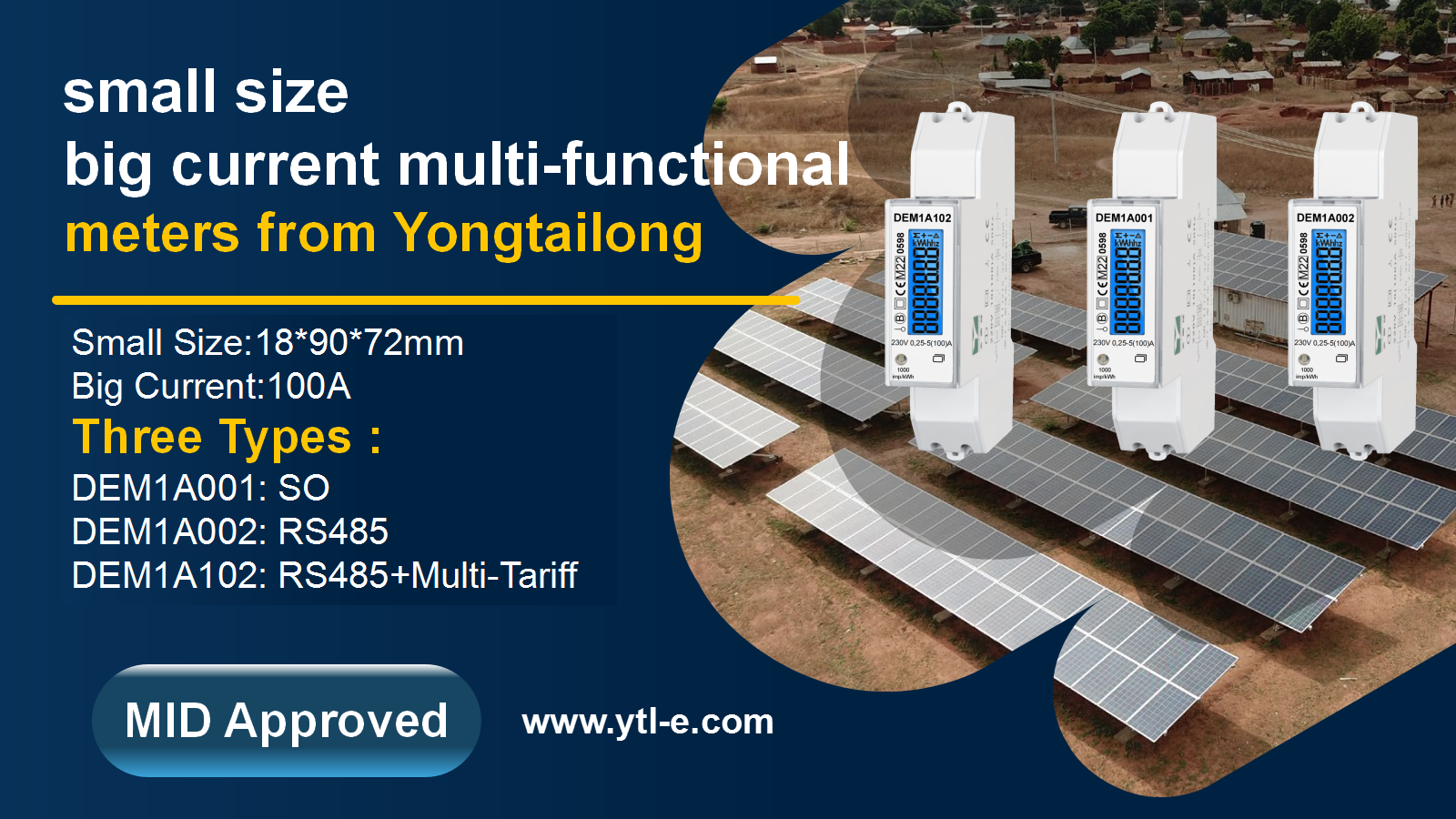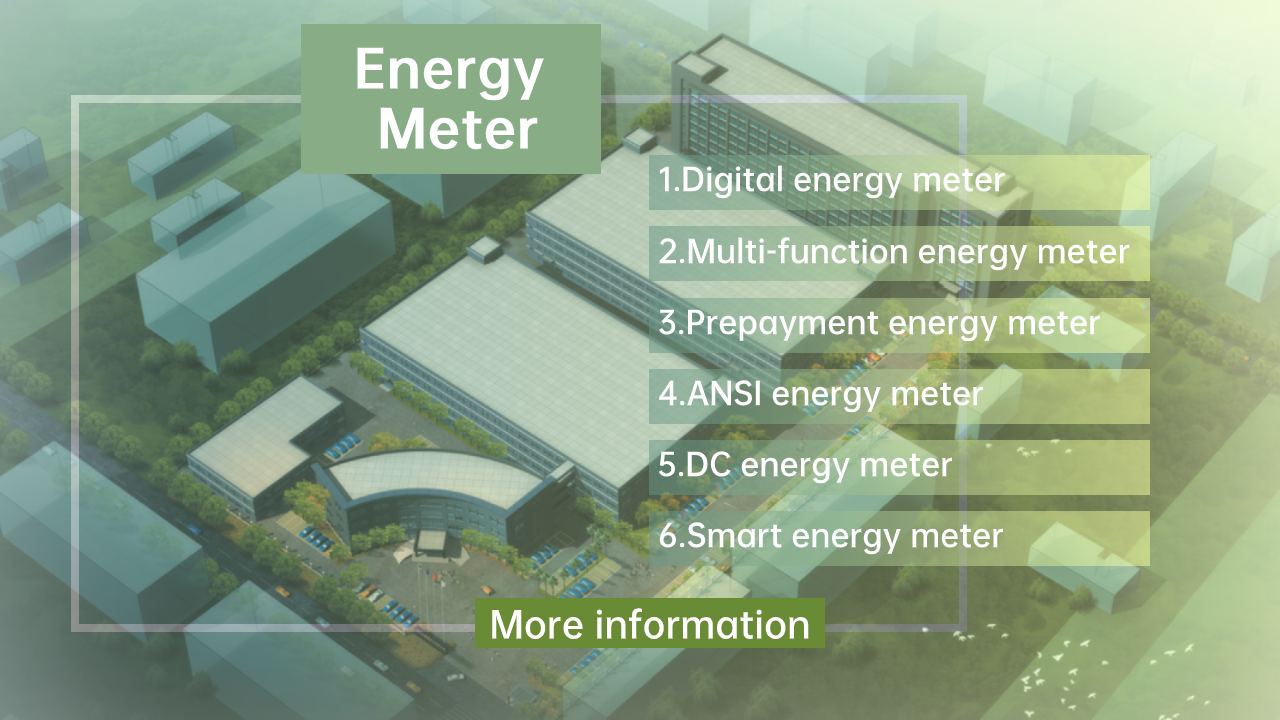How to match photovoltaic power generation system with electricity meter? Essential Reading Manual for New Energy Grid Connection - Electricity Meter
With the global focus on renewable energy, photovoltaic power generation systems are gradually becoming popular in households, businesses, and public facilities. However, how to choose suitable meters to monitor and manage energy flow has become a key issue for many users when installing and using photovoltaic power generation systems. This article will provide a detailed introduction to the importance, selection principles, and installation precautions of electricity meters in photovoltaic power generation systems, in order to help you better understand and optimize your new energy grid connected system.

1、 The importance of electricity meters in photovoltaic power generation systems
In photovoltaic power generation systems, electric meters play a crucial role. It can not only accurately measure the efficiency of solar power generation, but also help users understand energy usage, thereby achieving energy conservation and reducing electricity bills.
1. Monitor power generation
The electricity meter can display the real-time electricity generated by the photovoltaic system, helping users understand the operating status of the system. By monitoring power generation, users can promptly identify and resolve potential issues, ensuring efficient system operation.
2. Analyze energy usage
In addition to monitoring power generation, electricity meters can also record electricity consumption data for households or businesses. By comparing power generation and consumption, users can optimize energy use, reduce waste, and improve overall energy efficiency.
3. Perform billing calculation
For photovoltaic systems integrated into the public power grid, the electricity meter is a key device for calculating the output and input electricity. Accurate measurement data can ensure that users receive accurate revenue settlement and avoid economic losses caused by errors.

2、 How to choose a suitable photovoltaic meter
Choosing the appropriate photovoltaic meter is the foundation for ensuring the normal operation of the system. Here are some key considerations:
1. Measurement accuracy
Photovoltaic meters need to have high precision to ensure accurate measurement of power generation and consumption. It is generally recommended to choose an electric meter with an accuracy level of 0.5S or higher.
2. Communication interface
Modern photovoltaic systems typically require connection to remote monitoring platforms so that users can view data anytime, anywhere. Therefore, choosing a smart meter with RS485, Wi Fi, or GSM communication capabilities is a wise choice.
3. Power capacity
The power capacity of the electricity meter should be selected based on the power generation capacity and electricity demand of the system to ensure normal operation during peak load.
4. Durability and environmental adaptability
Photovoltaic systems typically operate outdoors or in industrial environments, and electricity meters need to have good moisture resistance, shock resistance, and be able to withstand complex power grid environments.
5. Compatibility and Certification
Ensure that the selected electricity meter complies with relevant national standards and certification requirements, such as IEC 62053 standard. At the same time, compatibility with other devices in the system (such as grid connected inverters) is also a factor that needs to be considered.

3、 Installation and configuration of electricity meters for photovoltaic power generation systems
The correct installation and configuration are key steps to ensure the normal operation of the electricity meter. Here are some practical suggestions:
1. Installation location selection
The electricity meter should be installed in a dry and well ventilated place, avoiding direct sunlight and humid environments. Meanwhile, ensure that the installation location is convenient for subsequent maintenance and data collection.
2. Accuracy of circuit connections
When connecting the electricity meter, it is necessary to strictly follow the circuit diagram to avoid short circuits or misconnections, otherwise it may cause equipment damage or measurement errors.
3. Calibration and Testing
After installation, the electricity meter should be preliminarily calibrated and tested to ensure that its measurement accuracy meets the requirements under different load conditions. Regular inspection and maintenance are also necessary means to maintain the long-term stable operation of the electricity meter.
4. Data recording and analysis
Regularly analyze the data provided by the electricity meter to understand system efficiency and energy utilization. According to the analysis results, the configuration and operation mode of the photovoltaic system can be further optimized.
4、 Common problems and solutions
In practical applications, users may encounter some common problems such as measurement errors, unstable communication, etc. Here are some coping strategies:
1. Measurement error
If it is found that the meter reading does not match the actual situation, the connection line should be checked for correctness first, and then recalibration should be carried out. If the problem persists, it may be necessary to replace the meter or contact a professional for repair.
2. Communication interruption
For smart meters, stable communication is a prerequisite for data transmission. Ensure good network signal and regularly check the working status of the communication module. In addition, backup communication methods such as mobile data can be configured to prevent primary link failure.
3. Environmental adaptability issues
If the electricity meter malfunctions in harsh environments, protective measures should be taken in a timely manner, such as installing dust covers or replacing equipment models suitable for the environment. Meanwhile, strengthening regular maintenance is also an effective means of preventing malfunctions.
5、 Summary
As an efficient and environmentally friendly energy solution, the maximization of the effectiveness of photovoltaic power generation systems relies on precise and reliable meter devices. By making reasonable choices and installing electricity meters correctly, users can fully control the entire process of energy production and consumption, thereby achieving the goal of energy conservation and emission reduction.
If you encounter more problems or need further technical support in practical operation, please feel free to contact professional suppliers or technical service teams to ensure that your photovoltaic power generation system is always in the operating condition.

 English
English 简体中文
简体中文


.png?imageView2/2/w/500/h/500/format/png/q/100)











